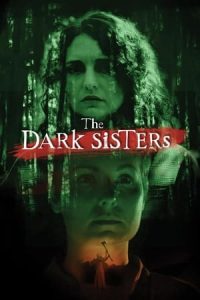- Source: I See a Dark Stranger
- Deborah Kerr
- Daftar film bertema lesbian, gay, biseksual dan transgender
- Natalia Dyer
- Joseph Gordon-Levitt
- 1001 Movies You Must See Before You Die
- The Umbrella Academy (seri televisi)
- Vince Barnett
- Jack Mower
- Cyril Ring
- Mitchell Lewis
- I See a Dark Stranger
- Katie Johnson (English actress)
- Frank Launder
- Deborah Kerr
- Raymond Huntley
- Liam Redmond
- Sidney Gilliat
- David Tomlinson
- Union Mills railway station
- Michael Howard (comedian)
Transformers: Dark of the Moon (2011)
The Dark Sisters (2023)
The Dark Knight Rises (2012)
Dark Shadows (2012)
Rumble Through the Dark (2023)
Thor: The Dark World (2013)
No More Posts Available.
No more pages to load.
I See a Dark Stranger (U.S. title: The Adventuress) is a 1946 British World War II spy comedy film directed by Frank Launder and Sidney Gilliat and starred Deborah Kerr and Trevor Howard.
Plot
Ireland, 1937. Young Bridie Quilty has grown up listening to her father's heroic tales of the Irish Revolution. As a result, she develops a hatred for everything and everyone British. By 1944, Mr. Quilty has died. Bridie, who is now 21, sets out for Dublin to carve a life of her own. On the train, she shares a compartment with J. Miller, a businessman returned from abroad. He is also a German agent who's entered Ireland unencumbered thanks to lax security. He shortly gets his assignment—to break a fellow spy out of prison. Miller recruits Bridie, who gets a job at a hotel and bar in Wynbridge Vale. Soon she becomes acquainted with a certain sergeant, who unwittingly provides her information about the prisoner's impending transfer to London. Meanwhile, Miller is disturbed by the arrival of Lieutenant David Baynes, a British officer he suspects of being a counter-intelligence agent. He tells Bridie to distract Baynes on the day of the transfer. The implication is clear. This enables Miller to free the spy.
However, the freed spy is later shot. Before dying, he tells Miller to recover a notebook on the Isle of Man that holds important information. Miller is wounded too, but he escapes. When Bridie returns to her room, he is there, dying. He gives her the location of the notebook to pass up the spy chain. Keeping his head to the last, he tells her to dispose of his body when he is dead, which she does. Bridie then sets out for the Isle of Man. She is trailed by David and a mysterious stranger – with British military intelligence patching the clues together and only a step behind. Successfully locating the notebook, she deciphers it, learning the location of the imminent D-Day landings. She decides to burn it. David later narrowly saves Bridie from being arrested as Miller's confederate, and after confessing his love for her, she tells him what she has done.
Bridie tries to turn herself in, but German agents kidnap her. David tracks them and ends up abducted too. When she refuses to tell what she knows, the two are taken to Ireland. The Nazis try to hide them amid a funeral procession, but the "mourners" are actually smugglers entering Northern Ireland. Things go wrong at the border crossing, a melee erupts, and the Bridie and David escape in the confusion. Believing that they are still in neutral Ireland, where Bridie would be merely interned, David calls the police from a pub. When he discovers that they are actually in Northern Ireland, and that Bridie could be shot as a spy, he tries to persuade her to flee across the border. But she insists on facing the consequences. A BBC broadcast then announces D-Day has begun, rendering what she knows useless to the Germans. David helps her escape, then discovers the pack of spies in a room upstairs. A fight breaks out, the police arrive, and arrest all. After the war Bridie and David wed, their troubles seemingly all behind them.
Cast
Production
Frank Launder and Sidney Gilliat, writers who had worked on Alfred Hitchcock's 1938 spy film The Lady Vanishes, formed Individual Pictures in 1945. I See a Dark Stranger was the first of ten films released by the company, with Launder kicking off an intended rotation between the pair as director.
The picture was filmed at various locations, including Dublin, Dundalk and around Wexford in Ireland, Dunster in England, and the Isle of Man.
During production, a rumour spread among crew members that a close relationship had developed between the "handsome, young" cinematographer Wilkie Cooper and Deborah Kerr. If it went beyond that, the affair was short-lived, as Kerr married Spitfire pilot Tony Bartley almost immediately after the film's completion.
Charters and Caldicott, characters Launder and Gilliat first introduced in The Lady Vanishes (1938), were set to appear in the film but due to a disagreement with the actors Basil Radford and Naunton Wayne they were replaced by Captain Goodhusband and Lieutenant Spanswick.
Reception
The film was released in the United States under the title The Adventuress, to good reviews but modest box office. Bosley Crowther, the critic for The New York Times called the film "keenly sensitive and shrewd."
In 1990 Sidney Gilliat quipped the film "must have broken even now."
Awards and honours
Deborah Kerr won a 1947 New York Film Critics Circle Award for Best Actress for her performances in Black Narcissus and I See a Dark Stranger.
References
Notes
Bibliography
Vermilye, Jerry. The Great British Films. 1978, Citadel Press, ISBN 0-8065-0661-X pp 94–96
External links
I See a Dark Stranger at IMDb
I See a Dark Stranger at AllMovie
I See a Dark Stranger at the TCM Movie Database
Film review at Variety
I See a Dark Stranger at Screenonline














